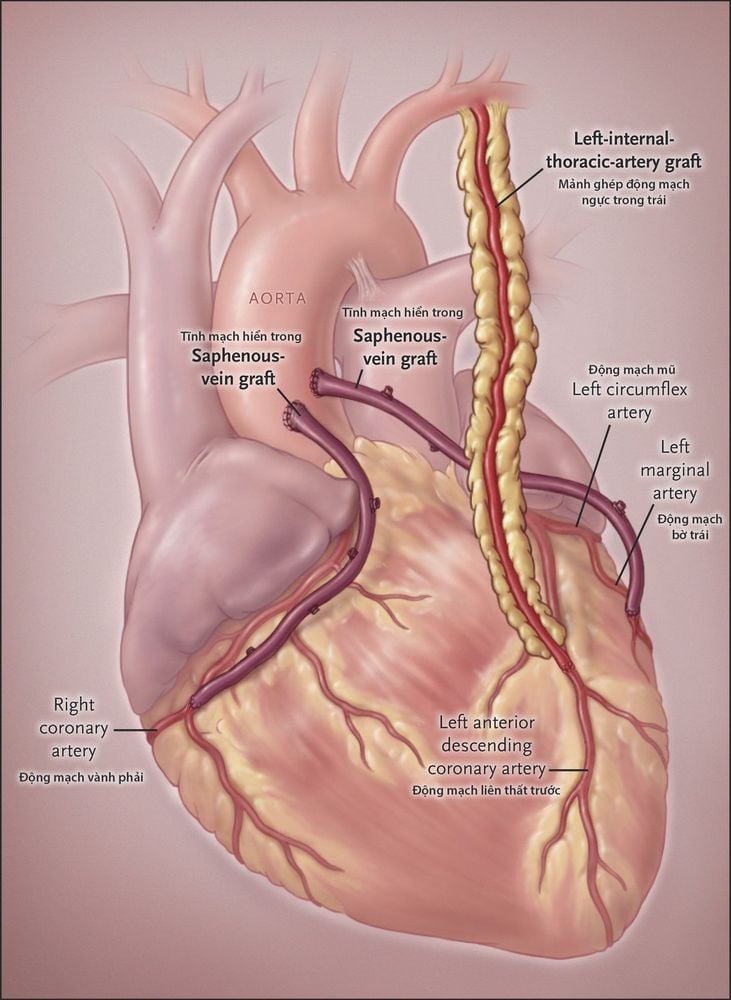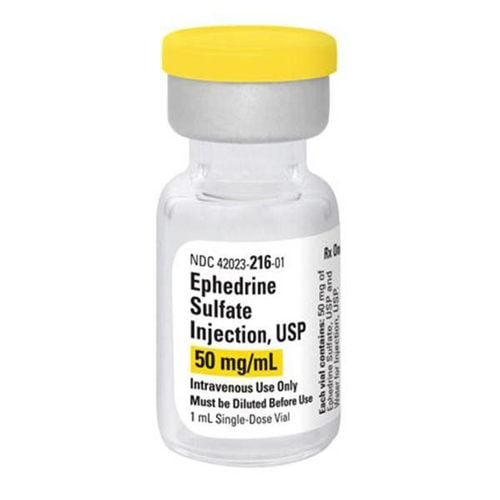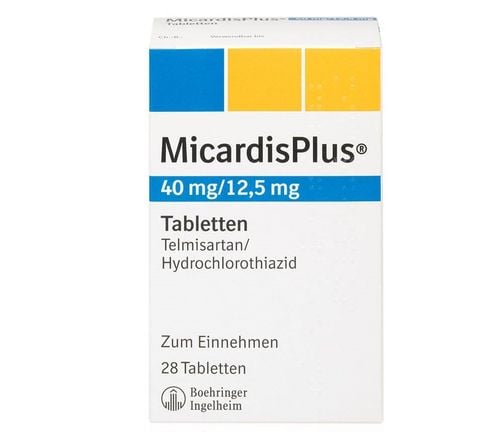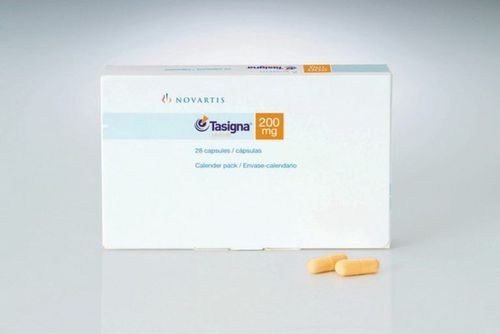This is an automatically translated article.
The article is professionally consulted by Cardiology & Thoracic Surgery doctors - Cardiovascular Center - Vinmec Central Park International General Hospital.Aortic-coronary bypass surgery is one of the most common ways to treat ischemic heart disease - coronary stenosis today. This is a routine surgery performed at Vinmec hospital.
1. What is coronary artery bypass surgery in the treatment of coronary artery stenosis?
The essence of coronary bypass surgery is a type of open heart surgery. In it, the surgeon will use a segment of the patient's own blood vessel (it can be a magnetic artery in the chest called the left and right internal thoracic arteries, the radial artery in the forearm, and the veins in the thigh and lower leg). leg) is used as a graft to “bridge”, the proximal anastomosis grafts into the aorta in the case of a detached graft, allowing blood to flow back to the coronary artery behind the narrow or blocked site. In other words, the blood supply to the heart will take a new route, the heart is no longer ischemic, and the ability to restore contractility can be almost complete if surgery is performed when the myocardial ischemia is present. the possibility of recovery. Patients can return to physical activity as before, symptoms will quickly disappear, and quality of life will improve significantly.2. Subjects indicated for coronary artery bypass surgery

Người lớn tuổi, tiền căn có bệnh tăng huyết áp, đái tháo đường thường dễ mắc bệnh tim thiếu máu cục bộ
Besides lifestyle changes, medications to control blood pressure, and other risk factors, the optimal treatment in cases of ischemic cardiomyopathy is coronary revascularization to increase blood pressure. blood to the heart. Minimal intervention is dilation and catheterization (stent) or complete intervention with surgical bypass. In particular, coronary artery bypass surgery is the most radical treatment, especially in cases where many coronary arteries are narrowed at the same time or one branch is narrowed in many places. This is also the recommended measure when the patient has a history of diabetes, long survival, other defects in need of repair in the heart and especially the risk of surgery is acceptable.
Indications: Coronary artery bypass surgery is indicated in patients with a diagnosis of ischemic cardiomyopathy due to narrowing of the main coronary arteries and branches larger than 1 mm in size. According to the recommendations of the Vietnam Heart Association, the American and European Heart Association, coronary bypass surgery is more beneficial than internal coronary intervention. In patients with severe coronary artery disease and left ventricular dysfunction, the indications for bypass surgery include: stenosis of the left coronary artery or both anterior interventricular and circumflex arteries of the left coronary artery; pathology of all three coronary arteries, especially with reduced left ventricular function; bicoronary artery disease with more than 75% stenosis of the anterior interventricular artery in the region anterior to the bifurcation of the first interventricular artery. In addition, if the patient also needs other repairs in the heart such as heart valve replacement, heart valve repair, valve ring, bypass surgery should also be indicated instead of stenting. Overall, coronary artery bypass grafting has a broader spectrum of indications than stenting. In other words, most patients who are indicated for stenting are likely candidates for bypass surgery.
Surgery will not be appropriate in subjects with poor left ventricular function unresponsive to hemodynamics, dilated chambers and difficult to recover, subjects with high surgical risk or short survival time. , quality of life has been poor. At the same time, surgery will not achieve its effectiveness if the patient has only a short narrowing of a single coronary artery.
3. Procedure for performing coronary artery bypass surgery

Mảnh ghép động mạch ngực trong trái
Once indicated, the patient will be arranged in advance to prepare, fast and clean the body. On time, the patient will be taken to the operating room, under anesthesia and the length of surgery will depend on the degree of coronary blockage, intervention strategy as well as the accompanying cardiac repair.
Doctors will anesthetize the patient for pain relief. Aortic-coronary bypass surgery usually lasts 3-4 hours. The standard incision through the mid-sternal line was without muscle cutting and at the end of the operation, the sternum was reattached with stainless steel threads. After directly examining the heart and surveying the coronary system, the doctors performed dissection of the autologous grafts to bridge the bridge, preferring to use the left internal thoracic artery originating from the left subclavian artery and running along the posterior longitudinal axis. the left sternal border, followed by the saphenous veins from the leg and the right internal thoracic artery or the radial artery from the forearm.
For left or right internal thoracic artery grafts with pedicles, only distal anastomosis is required on the coronary artery after narrowing or obstruction, for removable grafts, two anastomosis must be made: Proximal end on the aorta ascending and distal to the coronary arteries. To perform a distal coronary anastomosis, the anastomosis site must be immobilized and bleeding should be controlled during longitudinal opening of the coronary artery. There are 2 techniques currently being applied.
Classics are techniques that use an artificial heart-lung machine, also known as an extracorporeal circulation machine. This technique requires bringing blood out through a special plastic pipe system, exposed to air and gas exchange membranes, so it will more or less lead to harmful effects. This technique also requires re-pairing of the aorta and protection of the myocardium by pumping cardioplegic fluid to stop the heart during distal anastomosis. Some side effects of the cardiopulmonary bypass and cardiac paralysis may occur with prolonged use of the machine or prolonged cardiac paralysis. The cardiopulmonary technique without the use of an extracorporeal circuit is performed while the heart is still beating, without paralyzing the heart. The surgeon exposes the areas to be bridged by suturing the sutures above the pericardium and stretching the sutures to expose the desired areas of the heart. The heart continues to beat and ensures the patient's hemodynamics. The coronary area needs longitudinal opening to stabilize the distal anastomosis with a specialized support. This technique requires the surgeon to be trained in basic coronary surgery with a beating heart and then undergo specific training for the pulsating technique. This technique depends on the skill of the surgeon, the advantage is to avoid total myocardial ischemia during surgery using an artificial heart-lung machine with a pair of aorta, and to avoid the harmful side effects of the heart machine. After the surgery is over, the patient will move to the recovery room and gradually exercise their mobility as well as adhere to the medical treatment and re-check the cardiovascular function every month after that.
4. How should follow-up after coronary artery bypass surgery?
Immediately after coronary artery bypass surgery, blood is followed by another route leading to myocardial nourishment, from which the symptoms of myocardial ischemia will be completely improved. If the patient has had heart failure before, the feeling of fatigue, continuous shortness of breath also quickly subsides. Since then, the patient will return to the activities in daily activities as before without any difficulty. If you follow the cardiovascular rehabilitation exercises, your ability to exercise will certainly improve, and your quality of life will improve dramatically.However, at each subsequent follow-up visit, the physician should always monitor whether the symptoms of myocardial ischemia persist, the patient's exercise capacity decreases or does not recover, or the patient's symptoms are suspected. of arrhythmia... If there are any symptoms, the patient should be examined again soon. Most likely, the patient has a coronary angiogram to check the connection of the "bridge".
5. Advantages of coronary artery bypass surgery at Vinmec
According to general statistics in the world, 95% of patients with coronary artery bypass graft surgery are safe and 1-2% of patients unfortunately die early after surgery.85% of patients with coronary artery bypass surgery at Vinmec Central Park Hospital are performed heart beat technique without using an artificial heart-lung machine. Up to now, all surgeries have been performed successfully, 100% of patients are alive and discharged after surgery with no sequelae. Complications occurring after surgery were not significant and were treated stably. Coronary bypass surgery patients at Vinmec used vertebral plane anesthesia (ESP) instead of morphine to relieve pain, reduce hospital stay, and recover quickly after surgery. Most patients avoid the harmful effects of the ICD if too many stents have not been placed before or the disease is too advanced.
Vinmec Central Park International General Hospital is equipped with the most advanced machines and techniques such as: EV 1000 advanced hemodynamic monitoring machine; Apply painless surgical techniques; Shorten hospital stay and unwanted complications. Along with quality facilities equivalent to advanced countries, a team of experienced and well-trained Interventional Cardiologists - Cardiac Surgery with leading regional experts as well like the world at Vinmec Central Park including
Specialist Doctor I Nguyen Duc Vien Master Do Nguyen Thuy Doan Trang Master, Doctor Ho Thi Xuan Nga Doctor, Doctor Tran Van Hung Doctor Nguyen Duc Hien Doctor, Master Huynh Khiem Huy Doctor Nguyen Hong Vinh
Please dial HOTLINE for more information or register for an appointment HERE. Download MyVinmec app to make appointments faster and to manage your bookings easily.













